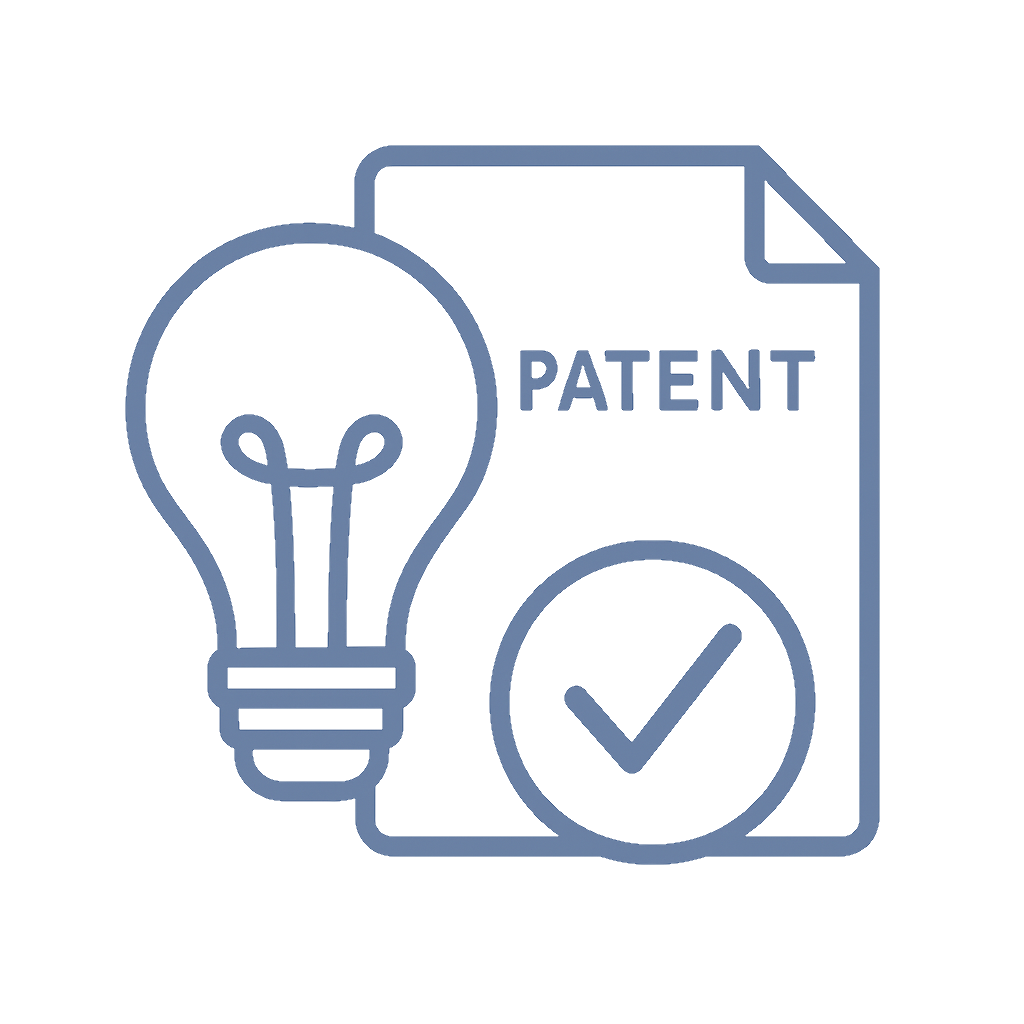Quick Overview
Choosing the right title for your patent is crucial for its legal strength and effectiveness. Unlike catchy marketing names, patent titles should be descriptive and clear, focusing on the invention's function and uniqueness. Using your product's marketing name can undermine the clarity and scope of your patent, leading to potential legal vulnerabilities. This article explores why your patent title should be practical, not promotional, and provides guidance for inventors on how to title their applications correctly.

Common Questions & Answers
Q1: Why shouldn’t I use my product name as my patent title?
A1: Your product name is designed for marketing appeal, while a patent title must convey a clear, technical description of the invention. The right title helps protect the patent’s legal standing.
Q2: What are the risks of using a marketing name for a patent?
A2: It can reduce the clarity of the patent, potentially weaken its legal protection, and may cause confusion during patent searches and in litigation.
Q3: What makes a good patent title?
A3: A good title is concise and descriptive, focusing on the invention's technical aspects rather than marketing fluff. For example, “Modular Vacuum Sealing Device” is better than “The PowerVac Pro.”
Q4: Can I change the title after filing?
A4: Changing a patent title post-filing can be complicated and may require formal amendments. It's best to get it right from the start.
Q5: Does the patent title impact patent searches?
A5: Yes, a clear, descriptive title improves searchability and helps patent examiners and competitors understand the nature of your invention.

Step-by-Step Guide
-
Understand the Function of Your Patent Title
Approach your title as a brief summary of what your invention accomplishes, not how it’s branded. Think practically and avoid flair. -
Use Clear, Technical Language
Be precise. Include key elements or functionalities that distinguish your invention without relying on market lingo. -
Consult Examples of Successful Patent Titles
Research similar inventions in patent databases to see how they’re titled. This will help you frame your title similarly. -
Avoid Trademarked Terms
Your product’s name is likely trademarked or at least heavily associated with your branding. Avoid conflicts by sticking to generic language. -
Review with Legal Counsel
Before filing, consult with your patent attorney to ensure that your title is clear, descriptive, and legally sound.
For more in-depth strategy discussions, consider scheduling a consultation with Devin Miller.
Historical Context
The principle of avoiding marketing terminology in patent titles is rooted in the evolution of patent law, dating back to the 19th century when the patent system began to solidify. Early patent titles were sometimes creative and vague, leading to disputes over the scope and enforceability of patents. As patent law developed, stricter guidelines emerged in the mid-20th century, focusing on clarity to prevent legal ambiguity. This change was influenced by the need to better protect inventors and simplify patent examination processes. Today, clear, descriptive patent titles are a cornerstone of effective patent filings, reinforcing the legal standing of the document and helping examiners and competitors understand the invention's novelty and scope.

Business Competition Examples
-
Apple Inc.
Apple’s patent strategy avoids the use of product names like “iPhone” or “AirPods.” Instead, they utilize functional titles such as “Portable Multifunction Device.” This practice ensures that their patents remain precise and distinct from marketing materials, strengthening their legal enforceability. -
Tesla, Inc.
Tesla files patents under names like “Energy Storage System” instead of “Powerwall,” which is the product name. This approach helps prevent confusion between consumer-facing branding and technical specifications, showcasing the difference between marketing and intellectual property protection. -
Samsung Electronics
Samsung's patents steer clear of product-specific branding, opting for clear titles such as “Method for Displaying User Interface” rather than using marketing names like “Galaxy.” This separation is vital for maintaining robust legal claims. -
Dyson Ltd.
Known for its innovative household appliances, Dyson chooses patent titles such as “Handheld Vacuum Cleaner with Motor and Cyclonic Separation” over branded terms like “Dyson Supersonic.” This ensures that their intellectual property is safeguarded through clear, descriptive titles that highlight functionality.

Discussion
Crafting the perfect patent title is both an art and a science, balancing the need for descriptive accuracy and legal efficacy. While product names are designed to attract customers and differentiate a brand, patent titles serve a wholly different purpose. A well-chosen patent title signals the core functionality and innovation of an invention, which is crucial for patent examiners and legal proceedings. If a title is too vague or leans too much on marketing terminology, it can compromise the patent’s searchability and limit the scope of protection, exposing the inventor to potential challenges. By separating marketing from intellectual property considerations, inventors can ensure that their patents withstand scrutiny, providing a stronger defense against infringement and protecting their competitive edge.
This contrast between marketing and legal approaches is significant in industries where branding is pivotal. The temptation to merge product identity with patent documentation can be strong, but the implications for enforceability and clarity should not be underestimated. Patents should clearly communicate their technical innovations, and titles play a foundational role in this clarity. Understanding this distinction can save inventors time, money, and potential future legal conflicts.

The Debate
For Descriptive Titles
Advocates for purely descriptive patent titles argue that they reinforce the legal protection of an invention by avoiding ambiguity. This clear representation aids in examination and defends against claims of invalidity.
Against Over-Simplification
Critics sometimes argue that overly technical titles may overlook nuances of the invention’s potential applications. However, this concern is outweighed by the need for clarity to support the patent's strength.

Takeaways
- A patent title should describe the invention's function and not reflect its marketing name to ensure legal strength.
- Using your product name as a title can introduce ambiguity and weaken the patent’s enforceability.
- Clear, precise language in titles enhances searchability and legal robustness, protecting against infringement.
- Ensure the title emphasizes functionality and innovation, distinguishing it from consumer-facing product names.
- Collaborate with legal experts to fine-tune your patent title, safeguarding the clarity and comprehensiveness of your application.

Potential Business Hazards
-
Weak Legal Coverage
A marketing-oriented title can limit the enforceability of your patent by creating ambiguity around its scope. This makes it easier for competitors to argue against its validity and produce similar products without violating your patent. -
Patent Search Issues
Ambiguous or marketing-driven titles can hinder patent examiners and other stakeholders from accurately identifying the scope of your invention. This could delay patent approval and make it more challenging to defend against infringement. -
Brand Damage
Associating a product name directly with a patent can backfire if the patent faces legal challenges. A publicized defeat could tarnish the brand and negatively impact consumer trust in the product. -
Difficulty in Amendments
If you need to amend the patent title post-filing to reflect a more accurate description, the process can be costly and bureaucratically complex. Amending patents often requires justification and can complicate ongoing litigation or negotiations.

Myths and Misconceptions
-
Myth: The Patent Title Should Be Flashy
Reality: A patent title needs to be clear and descriptive. Flashiness serves marketing, not the legal system. -
Myth: A Good Product Name Equals a Good Patent Title
Reality: A product name is for attracting consumers; a patent title must strictly detail the invention's technical aspects for legal protection. -
Myth: Any Title Will Do
Reality: Patent titles significantly affect searchability and enforceability. A vague or marketing-driven title can weaken the patent’s effectiveness. -
Myth: Titles Don’t Impact Patent Strength
Reality: Ambiguous or unclear titles can weaken a patent’s defense during infringement cases, potentially allowing competitors to argue around its protection.

Book & Podcast Recommendations
-
“Patent It Yourself” by David Pressman
A comprehensive guide for inventors, covering the nuances of patent applications, including the importance of choosing a precise title. -
“The Inventor’s Guide to Patents” by Richard Stim
Offers practical advice on preparing patent applications, emphasizing the role of titles and their contribution to strong patent claims. -
“Patents Demystified” by Dylan O. Adams
This guide breaks down patent law essentials, highlighting how proper titles contribute to the clarity and robustness of a patent. -
Podcast: “IP Fridays”
Focuses on practical IP tips, with episodes on crafting effective patent titles and avoiding common pitfalls in patent filing.

Legal Cases
-
Apple Inc. v. Samsung Electronics Co. (2011)
This case underscored the importance of clear and specific patent documentation. While the focus was on design patents, the takeaway for all patents is that clear descriptions and titles prevent ambiguity. -
Therasense, Inc. v. Becton, Dickinson and Co. (2011)
Highlighted the importance of transparency and detail in patent filings. Ambiguous titles can undermine claims during litigation, emphasizing the need for clear, descriptive titles. -
KSR International Co. v. Teleflex Inc. (2007)
A pivotal case that illustrated how clear descriptions and comprehensive patent claims contribute to upholding an invention's novelty and non-obviousness in legal disputes.

Share Your Expertise
Inventors and startups, make sure your innovation is well-protected and clearly presented. Explore Miller IP’s resources for tailored patent strategies at Inventive Unicorn.

Wrap Up
Crafting a patent title is more than just picking a name—it’s about ensuring clarity and legal soundness. By understanding the balance between technical precision and legal robustness, you can protect your invention more effectively.













